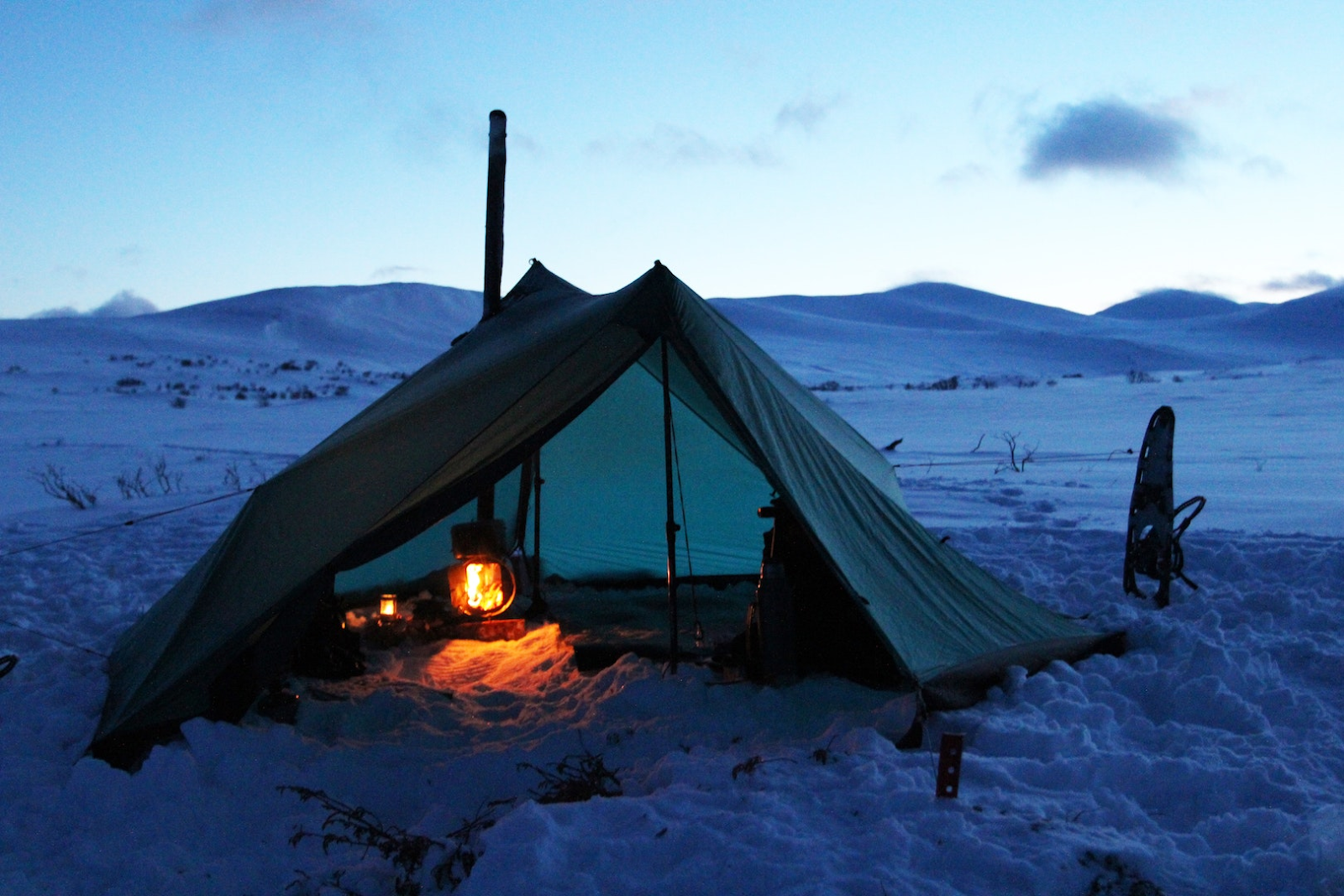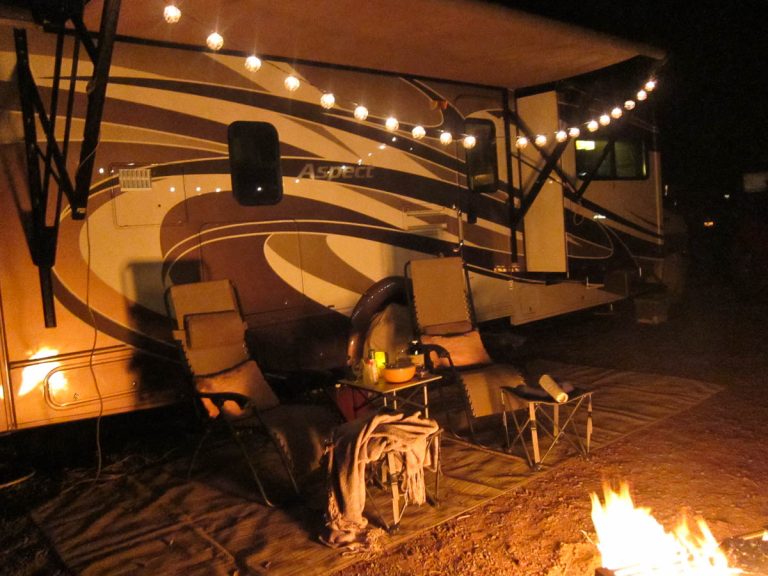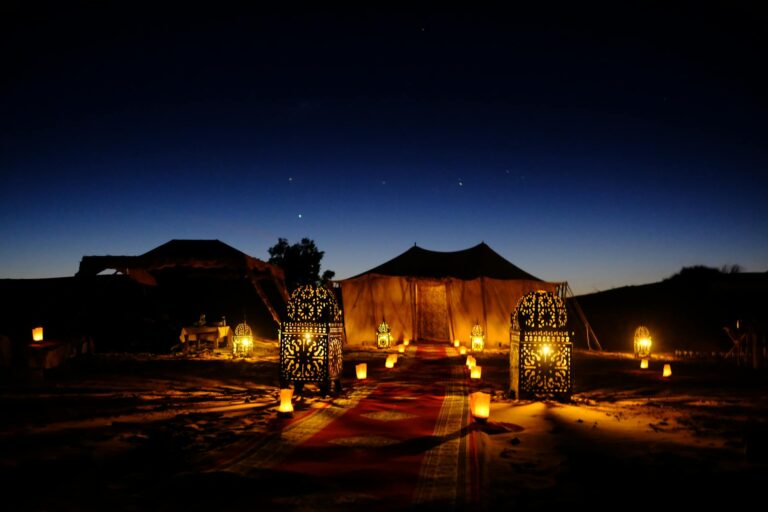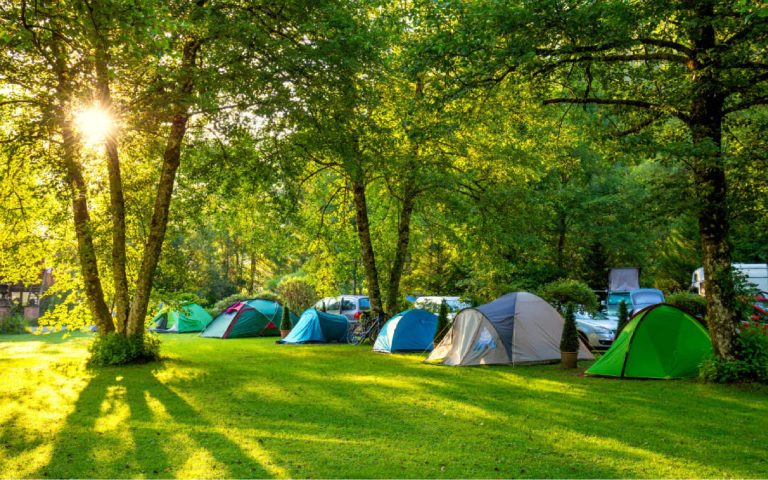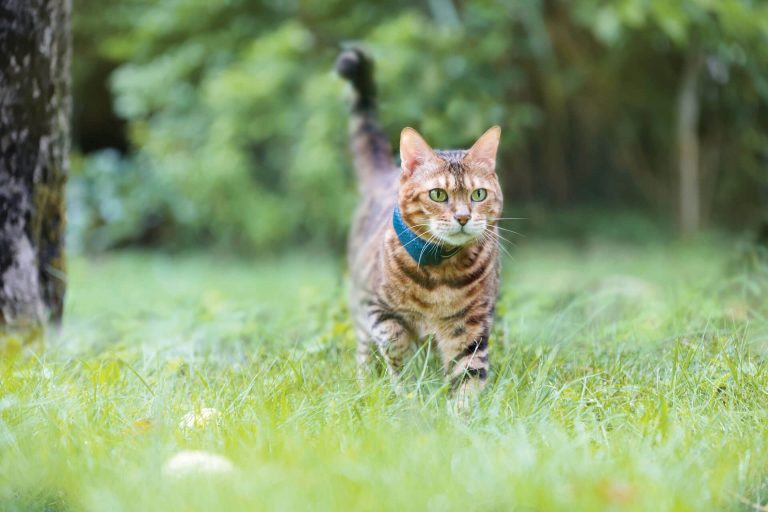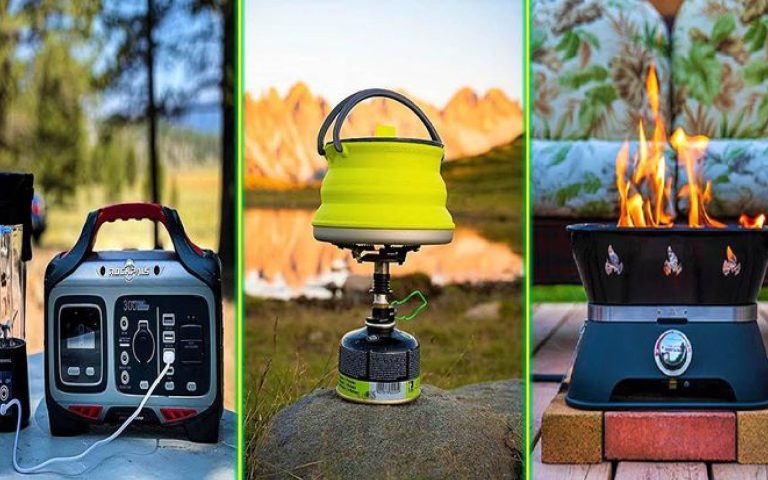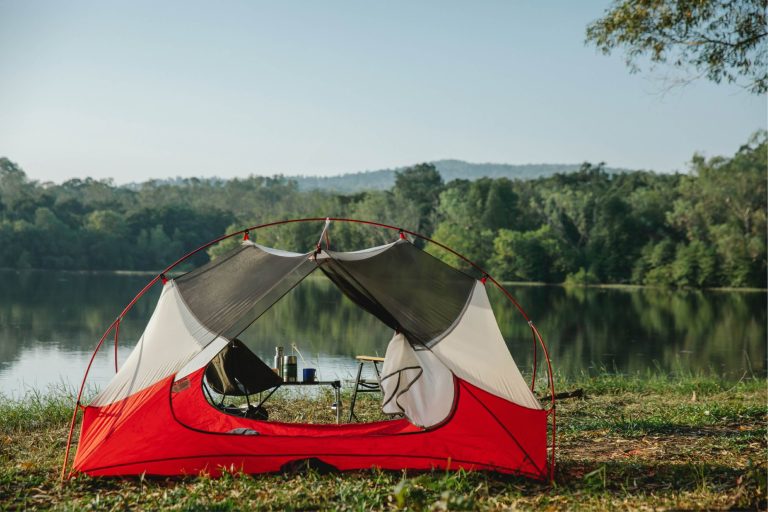What Is Hot Tent Camping?
Hot tent camping has become increasingly popular among outdoor enthusiasts, offering a unique and cozy experience in the winter months. This alternative way of camping allows you to enjoy the great outdoors even in freezing temperatures.
Want to know more? You have arrived at the right place. Now, we will explore the ins and outs of hot camping, including what is hot tent camping exactly, how it works, and the pros and cons of this winter activity.
What is Hot Tent Camping: Understanding the Hot Tent
Hot tent camping is a method of camping that involves setting up a heat source inside a tent to provide warmth in cold weather conditions. Unlike traditional camping, where you rely on sleeping bags and layers of clothing to keep warm, hot tent camping allows you to enjoy the comfort of a heated space. This type of camping is particularly popular in regions with extremely cold winters, such as Canada, Alaska, and Norway.
The key element of hot tent camping is the use of a wood-burning stove inside the tent. The stove provides both heat and a cooking area, making it possible to prepare meals and stay warm at the same time. To ensure safety, hot tents are equipped with a chimney or exhaust pipe to prevent the accumulation of carbon monoxide and smoke inside the tent.
Setting Up a Hot Tent
We have cleared the basics of what is hot tent camping so now onto the interesting bits. Before embarking on a hot tent camping adventure, you must have the right equipment and knowledge to set up your hot tent safely. Here are the key steps to follow:
- Choose the Right Tent: Hot tents are typically made of fire-resistant materials, such as treated canvas or specialized synthetic fabrics. These materials can withstand high temperatures and reduce the risk of accidents. It is important to ensure that your tent has a chimney, stove jack, or ventilation pipe for the stove.
- Select a Suitable Stove: The stove is the heart of your hot tent setup. It is crucial to choose a stove that is designed for use in tents and has proper venting to prevent smoke and carbon monoxide buildup. Popular options include portable box stoves and cylinder stoves.
- Prepare the Campsite: Find a suitable location for your hot tent campsite. Clear away any flammable materials, such as dry leaves or branches, and ensure there is enough space for the tent and stove setup. It is also important to check local regulations and obtain any necessary permits for camping in the area.
- Set Up the Tent: Follow the manufacturer’s instructions to set up your hot tent. Ensure that the tent is securely anchored to the ground and properly tensioned. If using a removable floor, attach it to the tent to provide insulation and protection from the cold ground.
- Install the Stove: Carefully place the stove inside the tent, ensuring that it is stable and positioned away from the tent walls. Connect the stovepipe or chimney to the stove and extend it through the designated opening in the tent.
- Test the Setup: Before lighting the stove, perform a thorough check of the entire setup. Ensure that all connections are secure, the tent is properly ventilated, and there are no obstructions in the stovepipe or chimney.
- Light the Stove: Follow the manufacturer’s instructions to safely light the stove. Once the fire is burning, adjust the airflow and temperature control to maintain a comfortable and safe heat level inside the tent.
What is Hot Tent Camping: Benefits
Hot tent camping offers a range of benefits that make it an attractive option for outdoor enthusiasts. Here are some of the advantages of hot tent camping:
- Comfort and Warmth: The primary benefit of hot tent camping is the ability to stay warm and comfortable even in freezing temperatures. The wood-burning stove provides a cozy atmosphere inside the tent, allowing you to relax, cook, and sleep comfortably.
- Cooking Convenience: Hot tents allow you to cook indoors safely, regardless of the weather conditions outside. With a stove inside the tent, you can prepare hot meals, boil water for beverages, and enjoy the convenience of cooking without leaving the comfort of your tent.
- Aesthetic Appeal: Hot tents have a unique and charming aesthetic that adds to the overall camping experience. The sight of a warm tent surrounded by snow-covered landscapes creates a magical atmosphere and enhances the enjoyment of being in nature.
- Year-Round Camping: Hot tent camping extends your camping season beyond the traditional summer months. It allows you to explore the outdoors in winter, experience different landscapes, and engage in activities such as snowshoeing, ice fishing, and cross-country skiing.
For more tips and tricks on hot tent camping, make sure to have a look at this great video.
Hot Tent Camping: Tips
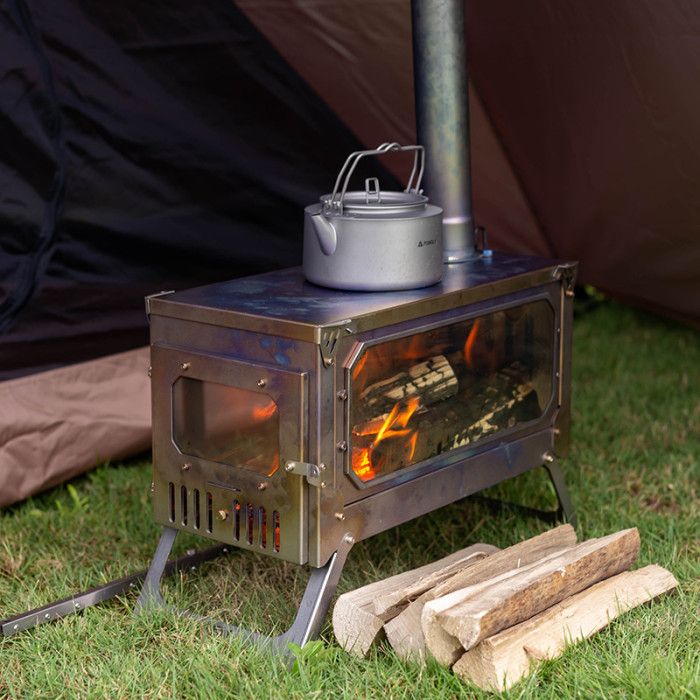
These tips will help ensure a comfortable and enjoyable hot tent camping experience.
- Timing is Key: Plan your camping trip during cooler months or opt for early mornings and late evenings when temperatures are more bearable. Avoid camping during extreme heatwaves.
- Use Cooling Gear: Bring along portable fans, battery-operated air conditioners, or cooling mats to help regulate the temperature inside the tent.
- Stay Hydrated: Drink plenty of water to stay hydrated, especially in hot weather. Consider bringing electrolyte drinks or frozen water bottles to keep drinks cold. Tips
- Dress Appropriately: Wear lightweight, breathable clothing and use moisture-wicking fabrics to stay cool. Consider packing a cooling towel or bandana to help regulate body temperature.
- Sleep Comfortably: Use lightweight sleeping bags or blankets designed for warm-weather camping. Consider sleeping on a cot or elevated platform to allow air circulation beneath you.
- Stay Safe: Be mindful of heat-related illnesses like heat exhaustion and heatstroke. Know the signs and symptoms, and take necessary precautions to stay safe in hot conditions.
How to stay warm when hot tenting
By following these tips, you can stay warm and cozy during your hot tenting adventures, even in chilly conditions.
- Choose the Right Gear: Invest in a high-quality hot tent with proper insulation and a stove jack for a wood-burning stove or heater. Look for tents with a durable fabric and a design that retains heat efficiently.
- Insulate the Ground: Use a thick ground pad or insulated sleeping pad to prevent heat loss to the ground. Consider layering blankets or rugs beneath your sleeping area for added insulation.
- Use a Heating Source: Set up a wood-burning stove or portable heater inside the tent to provide warmth. Make sure to follow safety guidelines and properly ventilate the tent to avoid carbon monoxide buildup.
- Seal Drafts: Inspect the tent for any gaps or openings where cold air may enter. Use tent seam sealer or draft stoppers to seal any gaps and keep warm air inside.
- Layer Up: Wear thermal underwear, fleece layers, and insulated clothing to trap body heat. Consider bringing a hot water bottle or heated blanket to warm up your sleeping bag before bedtime.
- Eat Warm Meals: Consume hot meals and beverages to warm up from the inside out. Pack soups, stews, and hot drinks like tea or cocoa to keep yourself warm and nourished.
- Stay Active: Engage in light physical activity before bedtime to generate body heat. Consider doing jumping jacks, stretching, or taking a short walk to warm up before getting into your sleeping bag.
- Stay Dry: Keep moisture away from your body and clothing to prevent heat loss. Change into dry clothes before bedtime and avoid sweating excessively to stay warm and comfortable throughout the night.
Safety Considerations
While hot tent camping can be a rewarding experience, it is important to prioritize safety. Here are some key safety considerations to keep in mind:
- Ventilation: Proper ventilation is crucial when using a wood-burning stove inside a tent. Ensure that your tent has a chimney, stove jack, or ventilation pipe to remove smoke, carbon monoxide, and other potentially harmful gases.
- Fire Safety: Always exercise caution when using a stove inside a tent. Never leave the stove unattended and make sure to extinguish the fire before going to sleep or leaving the tent. Keep a fire extinguisher or bucket of water nearby for emergencies.
- Tent Selection: Choose a tent that is specifically designed for hot tent camping. Look for fire-resistant materials and sturdy construction to minimize the risk of accidents. Regular tents may not be suitable for use with a wood-burning stove.
- Carbon Monoxide Monitoring: It is essential to have carbon monoxide and oxygen depletion monitors inside your tent. These devices will alert you to dangerous levels of carbon monoxide and ensure a safe breathing environment.
- Proper Stove Usage: Follow the manufacturer’s instructions for operating and maintaining your stove. Avoid using coal or charcoal as fuel, as they can produce harmful gases. Stick to wood as the recommended fuel source.
What is Hot Tent Camping: Last Thoughts
You now know it is an exciting and unique way to enjoy the outdoors during the winter months. The benefits of hot tent camping, including comfort, cooking convenience, and the ability to escape the crowds, make it an appealing option for outdoor enthusiasts seeking new adventures.
If you’re ready to embark on a hot tent camping journey, always prioritize safety, choose the right equipment, and be prepared for the challenges and rewards that await you

Meet Sarah, a passionate traveler and camping enthusiast who loves to explore the great outdoors. With years of exploring, she has become an expert in testing and reviewing the best tents on the market which got her to start mytravelingtents.com. Her insightful reviews provide valuable information to fellow adventurers looking for the perfect tent for their next camping trip.
